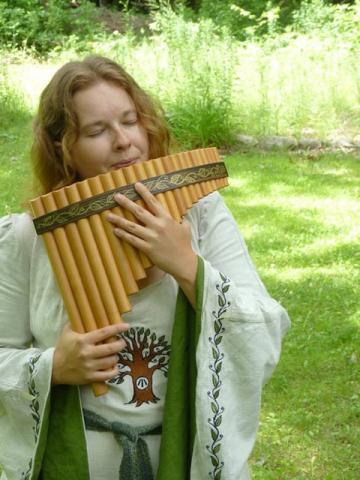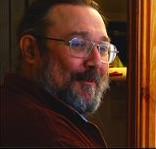20th Mount Haemus Lecture : What Druidry does – a perspective on the spiritual dynamics of the OBOD course

Dr Susan Jones, MBA, has a professional background in science, higher education, business and government, alongside 30 years’ psycho-spiritual involvement including 17 years as OBOD’s Mentor Co-ordinator. Most that is written about Druidry by academics, commentators and leaders focuses on what Druids believe and do – what they practice and their rituals, what ideas they share. It is based on evidence that can be seen. But Druidry develops in the hearts and minds of individuals and may be unexposed to the outside world. This paper offers a different perspective: what Druidry does. As OBOD’s Mentor Co-ordinator, Susan had a unique position from which to view the spiritual dynamics of Druidry, through the lens of the OBOD course. What does Druidry do? How does it do it? Is it of value? Does it have limits? Her new research will also seek to answer a puzzle – whatever happened to those who enrolled as OBOD members but didn’t follow the course through? Do they still find a benefit in Druidry? How could what we know so far influence what Druidry will do next? This paper will be a celebration of over 7,000 students who have shared something of their spiritual journeys, with some truly remarkable insights that add to the general discourse about Druidry and the life spiritual.
19th Mount Haemus Lecture


Dr. Dana Driscoll, Associate Professor of English, Indiana University of Pennsylvania (US) has long explored how people learn to write and develop as writers over time. In this study, she applies learning theory to explore bardic (creative) practices in the modern druid revival movement. Through a survey of 266 druids and in-depth interviews with 14 bardic practitioners, the research explores how people taking up the path of the bard develop expertise, seek community, reap spiritual benefits, and embrace the flow of Awen (inspiration). A key finding is the role of the Eisteddfod (bardic circle) in the development of the bardic arts. Also considered are the challenges new bards face including overcoming the myth of talent and addressing cultural conditioning. Through the lens of learning theory, the study concludes by considering how the druid community can help individuals overcome barriers to taking up the path of the bard and continue to promote and cultivate the bardic arts for individuals, groves, and gatherings.
18th Mount Haemus : Lecture The Elementary Forms of Druidic Life – Towards a Moral Ecology of Land, Sea, and Sky


Jonathan Woolley, a PhD student at the University of Cambridge, is part of a research project studying the relationships between people and the environment, funded by the Arts and Humanities Research Council. His work with contemporary Druids explores the spiritual landscape they inhabit, and follows the political and social agency of such surroundings. By comparing the three worlds of Druidry with other cosmologies – both within the West, and elsewhere – we can develop a clear appreciation of what truly defines Druidry as a spiritual community; the elementary forms of Druidic life.
17th Mount Haemus Lecture: Tree Lore is Wisdom


The ogam alphabet is important in Celtic history. It is important in Druidic tradition. But the ogam alphabet that is important in Celtic history is not at all the same thing as the ogam alphabet in Druidry. This dichotomy represents an excellent example of just how different history and tradition can be. History attempts to record facts, events and decisions relating to specific times. Tradition represents the way in which people want to remember those facts, events and decisions afterwards – not simply repeating them, but finding ways to add meaning to them, to commemorate them in action or in thought, and to make them influential in their own lives. Tradition can therefore be cultural and/or religious, national and/or group-oriented, gregariously inclusive or intensely personal. Above all, however, tradition that endures over time, and expands as it does so, eventually has its own history.
16th Mount Haemus Lecture: Gathering Mistletoe – an approach to the Work of E.Graham Howe


Ian Rees analyses and seeks to interpret the work of psychologist and Druid Graham Howe, showing the centrality of the archetype of the Druid within it, and comparing it to more recent therapeutic work drawing from Preiddeu Annwn and the Mabinogion. Particular attention will be given to explaining and interpreting the concepts and models behind his healing approach, which unites both non-dual spirituality with the direct experience of the body, and placing them within the wider tradition of Druidic philosophy and healing approaches. The intention of the paper will be be to represent his work in such a way that therapists and Druids of whatever occupation can make use of it today.
15th Mount Haemus Lecture: ‘Almost unmentionable in polite society’? Druidry and Archaeologists in the Later Twentieth Century


Dr Julia Farley discusses the changing attitudes of twentieth century archaeologists studying the nature of ancient Druidry. As archaeology emerged as a professional discipline, its nature and character were shaped in part by its relationship to other ways of understanding the past. These included traditional antiquarian approaches as well as spiritual and religious ideas. The struggle to determine a new archaeological orthodoxy was played out in the context of a sometimes strained but always lively relationship with modern Druid movements, often centring on the understanding of particular sites, including Stonehenge. Julia obtained her PhD from the University of Leicester, and is now the Curator of the European Iron Age collections at the British Museum.